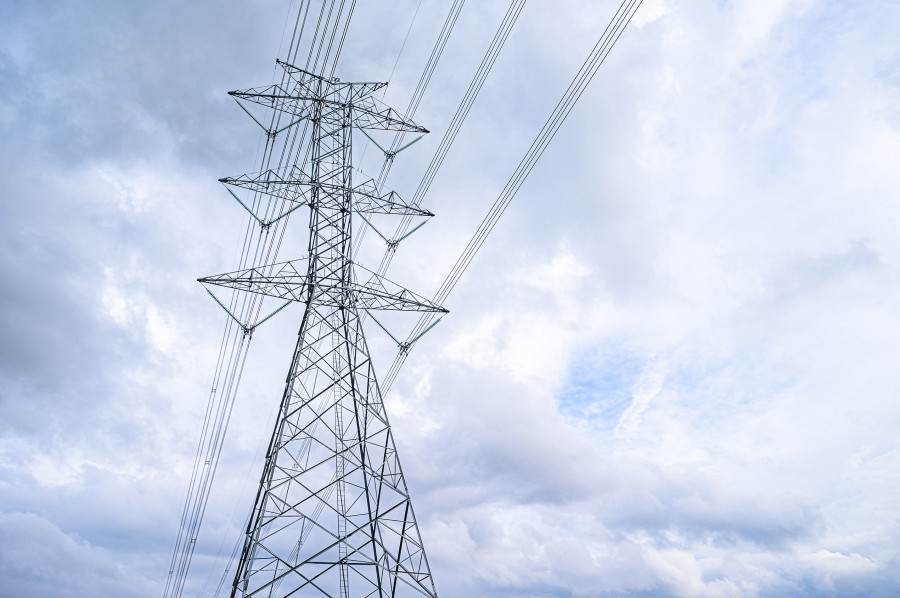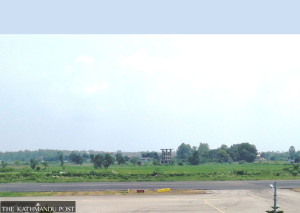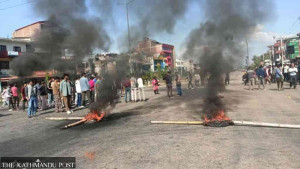National
Dispute at Bharatpur-Bardaghat transmission line may end as NEA offers higher prices for land
Dumkibas locals are reportedly positive about the new offer but continue their protest.
Prithvi Man Shrestha
The Nepal Electricity Authority (NEA) is optimistic about finding a solution to an ongoing dispute with residents of Dumikas in Nawalparasi (East of Susta) over the construction of the two remaining pylons of the Bharatpur-Bardaghat transmission line after a fresh valuation of their lands was done.
A long-running obstruction by locals at the pylon-erection site in the Dumkibas area in Binaya Tribeni Rural Municipality has continued even after the Supreme Court on June 27 last year cleared the way for the project work to move ahead by vacating an interim order. The locals are not satisfied with the price offered for their land to be acquired by the project.
Earlier, the project’s work had stalled for over a year after the Supreme Court, acting on a writ petition filed by locals, issued an interim order in April 2021 to stop work on the two last pylons.
“Now, a committee headed by the chief district officer has proposed a new value for the land where the two pylons would be erected and the land falling between the pylons,” said Santosh Sah, chief of the transmission line project.
“The project has decided to pay the market value for the land to be occupied by the pylons and up to 50 percent of the market value for the land falling under the transmission line.”
The NEA does not acquire the land that falls under the transmission line, but has a policy of providing 20 percent of the value of the land, as compensation. “In the case of this specific area, compensation has been determined in a way that most of the land owners would get in the range of 40–50 percent of the value of the lands,” said Sah. The NEA will provide such compensation for the lands that fall within 15 metres on either side of the transmission line.
“Though the locals have yet to endorse the revised prices, we are hopeful they will finally agree to it,” said Sah. “The elected local representatives are also trying to convince the locals and they are telling us that the residents are more positive than before.”
Earlier, the NEA had decided to be flexible on compensation, to end the dispute. Particularly in the case of this project, the NEA had decided to provide compensation of as much as 50 percent of the value of the land. But, those landowners who will lose around 75 percent of their property to the transmission line, will be qualified to get compensation up to 50 percent of the value of the land.
Likewise, those who will lose between 50 percent and 75 percent of their lands will get 40 percent of the value as compensation, as per criteria set by the NEA. The land owners losing lands between 25 percent and 50 percent of their total land will get 30 percent of the value as compensation, and those losing less than 25 percent will be paid 20 percent of the value of land, in compensation.
“The valuation has been made in such a way that most of the landowners would get compensation in the range of 40–50 percent of the value of the land, irrespective of the criteria set by the NEA,” said Sah.
Now the state-owned power utility will have to compensate around 50 households whose lands fall within a tract of around 600 metres between the two pylons, according to the NEA.
However, the locals have not stopped their protests yet even after the announcement of new rates for compensation, according to Sah. “So, the elected representatives at the local levels are trying to convince the locals to accept the revised compensation. We are hopeful that they will end the protest,” he added.
While the NEA plans to pay compensation for the plots falling within 15 metres on either side of the transmission line, locals have long been demanding that the area be expanded to 50 metres on either side. Following the revised compensation, there is growing optimism that an understanding could be reached, officials of NEA and the local government said.
“Locals have been more positive than before to give up their lands for the transmission line,” said Pushpa Ale Magar, ward 2 chair of Binaya Tribeni Rural Municipality. “They are now trying to learn how much they will get in compensation.”
She said that she was making efforts to bring together both sides so that there would be no administrative intervention to implement the project.
As the land under high-voltage lines cannot be used for any purpose other than agriculture, people had initially refused to provide the land and are now demanding higher amounts in compensation. Also, banks and financial institutions do not accept such land as collateral for loans.
“Locals were demanding compensation for land falling within 50 metres on either side because a number of landowners have placed their lands as collateral for bank loans,” said Magar. “Some locals have complained that banks have been pressuring them to clear the loans immediately upon learning that the lands fall under the transmission line.”
Ale Magar said that as locals have been positive about providing their lands for the project, they are also demanding certain development benefits should be delivered in exchange.
The Bharatpur-Bardaghat Transmission Line is one of the many transmission line projects facing local obstructions. According to the NEA, it has already erected 244 of the 246 pylons of the 74-km transmission line.
The NEA in a statement on June 30 last year had said that the completion of this 220kV power line is vital to the supply of power to the western part of the country from the east, which would help reduce power imports from India through the bordering Tanakpur area of India.
The existing 132 kV Bharatpur-Bardaghat transmission line connecting the country’s eastern region with the western side has been making it difficult to supply large quantities of power from one area to another, according to the NEA. The line can carry a maximum of 80 MW.
So, the NEA said developing high-capacity power lines across the country is vital to ensuring reliable power supply across the country and to ensure uninterrupted cross-border power trade. According to the NEA, it will not take much time to complete the remaining tasks for the project. “We can complete the work within a month and a half after starting the work,” said Sah.




 11.12°C Kathmandu
11.12°C Kathmandu













%20(1).jpg&w=300&height=200)

